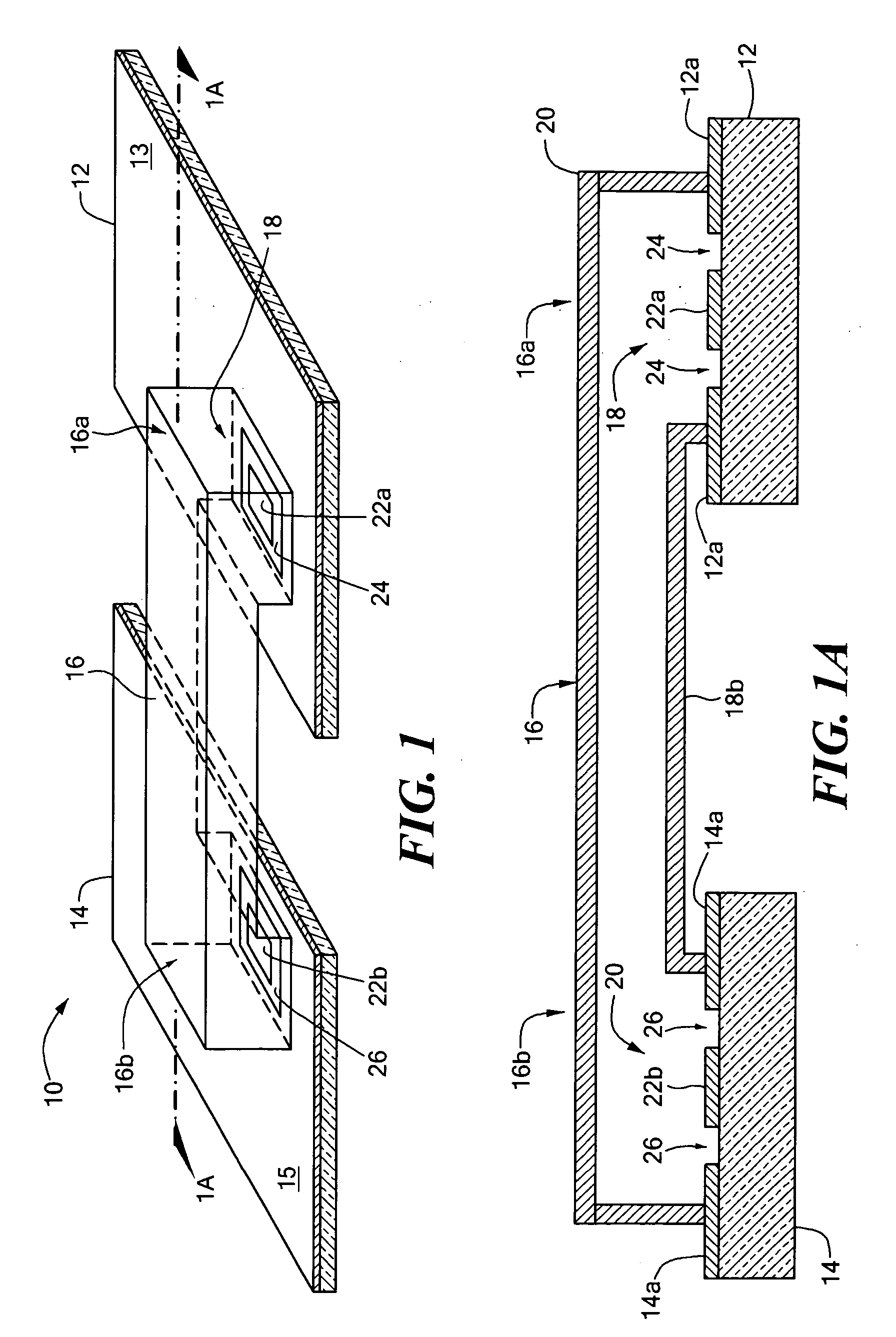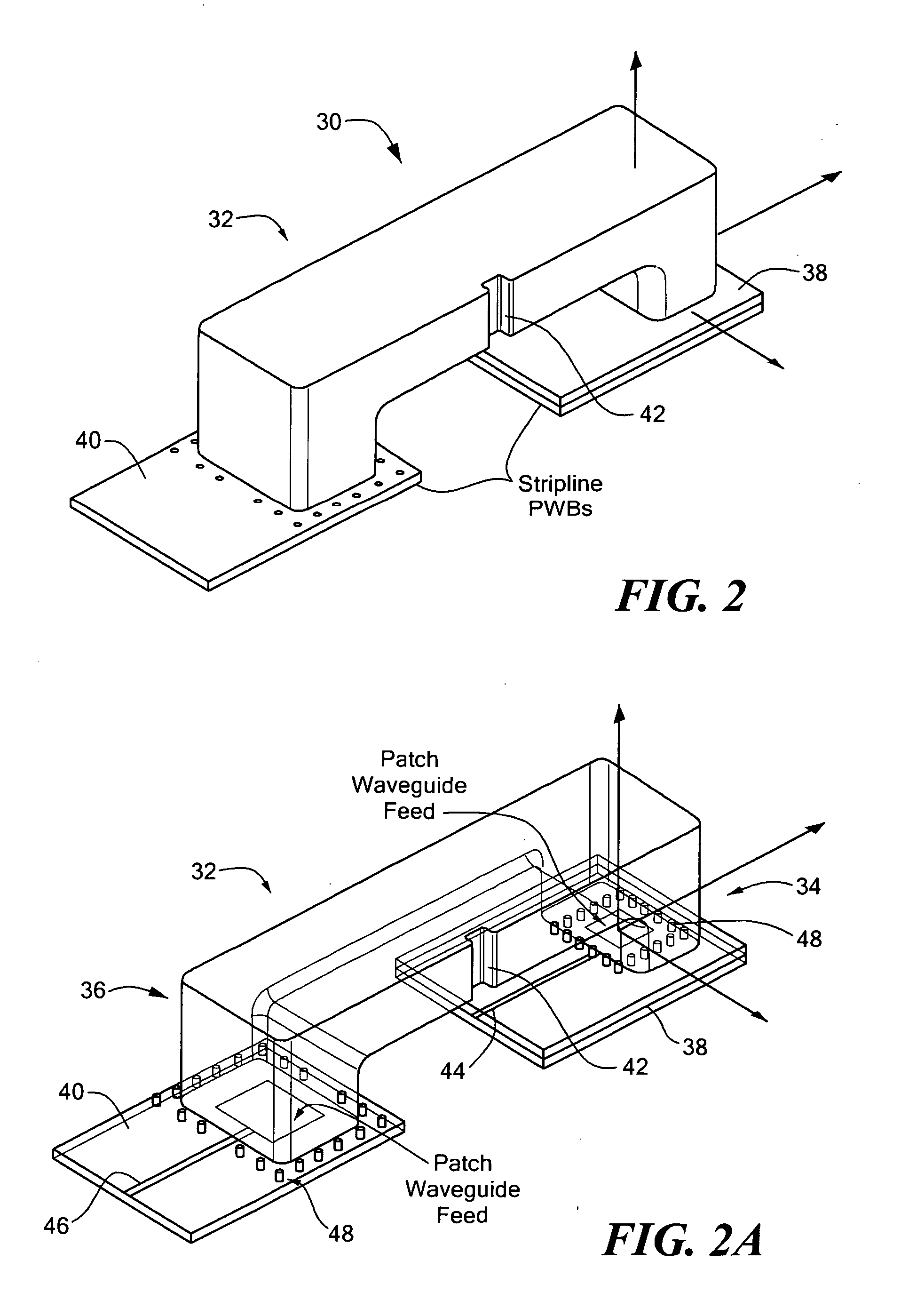Waveguide - printed wiring board (PWB) interconnection
a printed wiring board and waveguide technology, applied in the field of radio frequency (rf) interconnection techniques, can solve the problems of relatively complicated assembly requiring precision parts, high implementation complexity, reliability concerns, etc., and achieve the effects of reducing (or in some cases even minimizing) leakage signals, improving sensitivity, and reducing complexity
- Summary
- Abstract
- Description
- Claims
- Application Information
AI Technical Summary
Benefits of technology
Problems solved by technology
Method used
Image
Examples
Embodiment Construction
[0035] Referring now to FIGS. 1 and 1A in which like elements are provided having like reference designations, an RF interconnection 10 between first and second radio frequency (RF) Printed Wiring Boards (PWBs) 12, 14 (also sometimes referred to as printed circuit boards or PCBs) includes a waveguide transmission line 16 having first and second ends 16a, 16b (also referred to as waveguide port apertures or more simply waveguide ports) and pair of waveguide feed circuits 18, 20 disposed to launch signals into and couple signals out of the transmission line 16 at ends 16a, 16b, respectively.
[0036] The feed circuits 18, 20 are each provided as an integral part of at least a portion of the PWBs 12, 14 respectively. In the exemplary embodiment shown in FIGS. 1 and 1A, the feed circuits 18, 20 are provided as radiating elements and in particular are provided as micro-strip (or so-called “patch”) antenna elements on PWB surfaces 12a, 14a. Each patch is provided from a conductive region 22...
PUM
 Login to View More
Login to View More Abstract
Description
Claims
Application Information
 Login to View More
Login to View More - R&D
- Intellectual Property
- Life Sciences
- Materials
- Tech Scout
- Unparalleled Data Quality
- Higher Quality Content
- 60% Fewer Hallucinations
Browse by: Latest US Patents, China's latest patents, Technical Efficacy Thesaurus, Application Domain, Technology Topic, Popular Technical Reports.
© 2025 PatSnap. All rights reserved.Legal|Privacy policy|Modern Slavery Act Transparency Statement|Sitemap|About US| Contact US: help@patsnap.com



